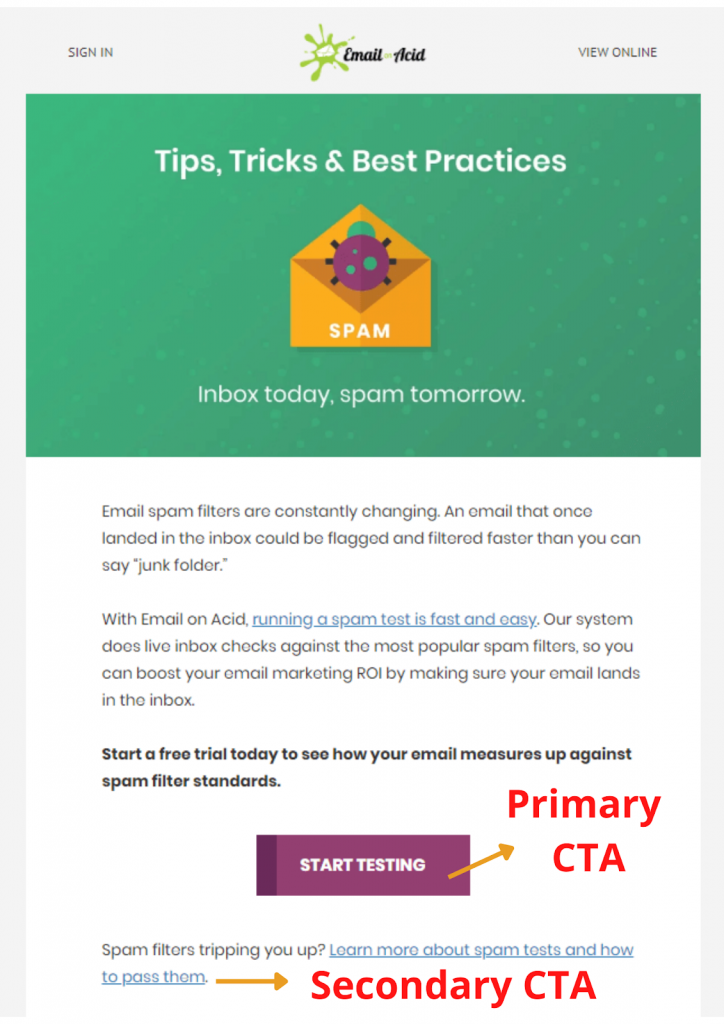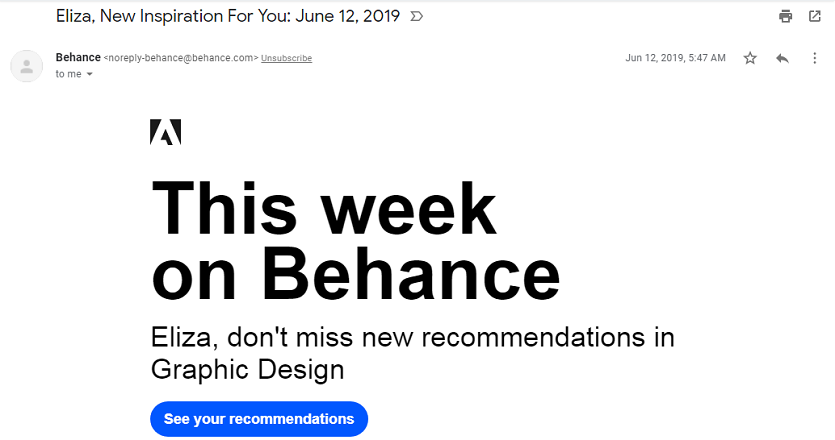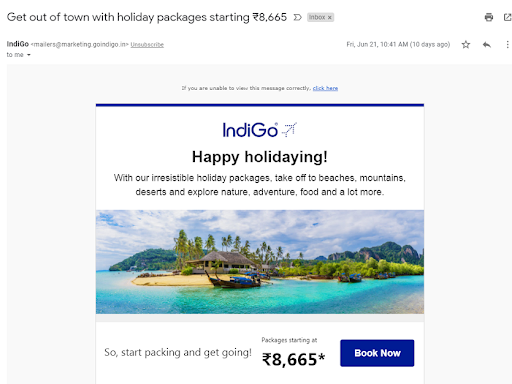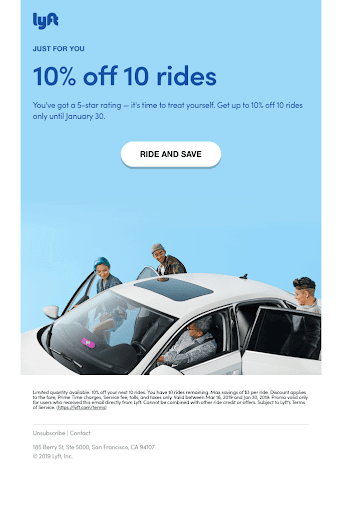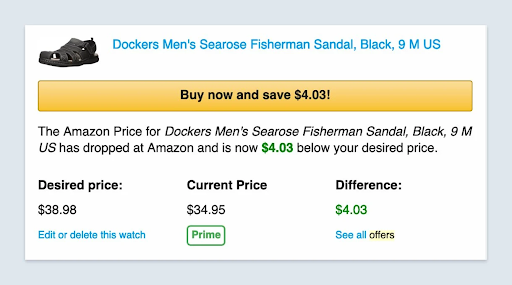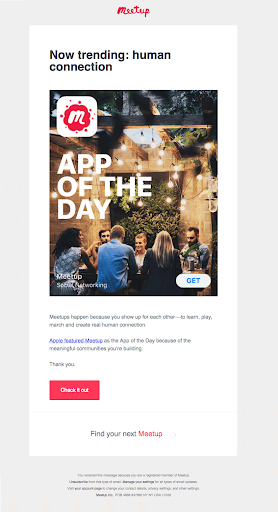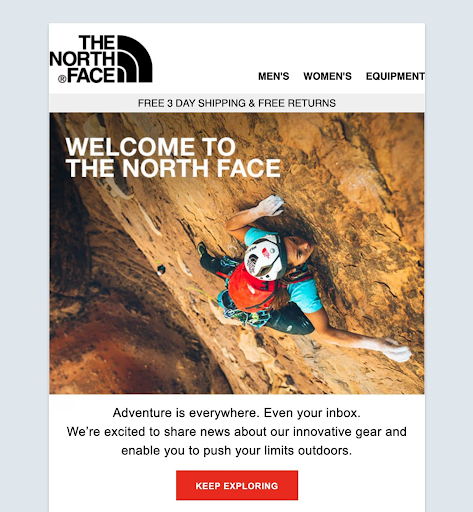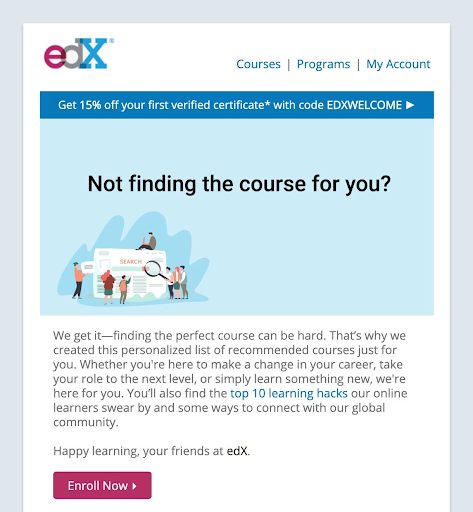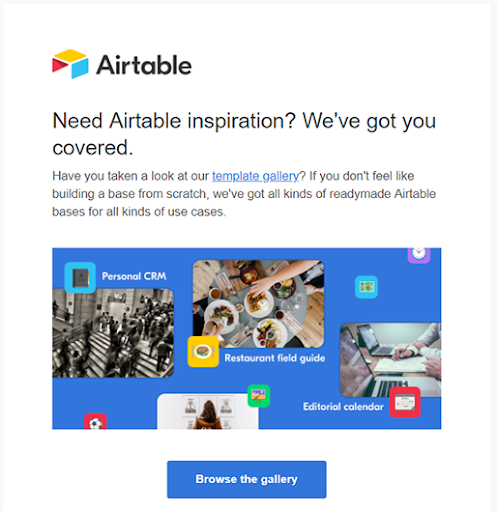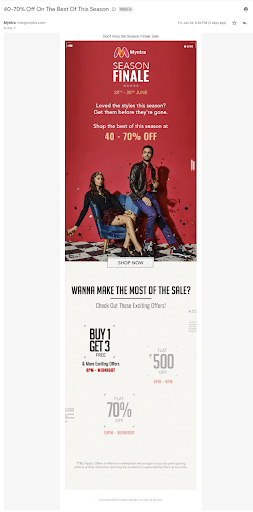- Products
- ProspectSQL/MQL list building with high levels of personalization, real-time data enrichment and prospect search
- Email FinderFind individual or bulk emails by entering the person & company name or domain
- Email VerifierVerify emails addresses individually, in bulk or through API, with 99% accuracy
- Clearout For SheetsVerify email addresses directly on Google Sheets with Clearout for sheets add-on
- ClearoutPhoneValidate phone numbers across 240+ countries in bulk, quick or real time validation Free Tools
- Disposable Email Checker
- Reverse LinkedIn Profile Lookup Tool
- Reverse Email Lookup Tool
- Email List Cleaner
- Resource
- Pricing
- Integrations
- Enterprise
- Login
How to Create an Email Call-To-Action (CTA) That Enhances Conversion Rate!

The power of email marketing lies in its ability to reach and connect with the target audience in a personalized way. Your final step in email conversion is to provide your readers with compelling reasons to click. This requires a call to action (CTA) that actually works!
CTA is the heart of any digital marketing campaign as it decides your ability to attain the goal through email marketing. The primary purpose of using Call-to-action is to generate more engagement and conversion rates.
? Read: Email Marketing Tips for 2022
CTA is the heart of any digital marketing campaign as it decides your ability to attain the goal through email marketing. The primary purpose of using Call-to-action is to generate more engagement and conversion rates.
? Read: Email Marketing Tips for 2022
What Is Call-To-Action or CTA in Email Marketing?
Call-to-action or a CTA button is widely used in email marketing campaigns to enable the audiences to take specific action towards online business.
Well-designed CTAs make it easy for customers to know what to do next and increase conversions. CTA supports conversions like purchases, video views, sign-ups, downloads, and social media followings.
CTAs can be implemented in the form of links and buttons. CTA buttons are likely to bring in more results as they can be designed to grab more attention.
CampaignMonitor found that CTA buttons had a 28% higher click-through rate than link-based CTAs. Also, Copyblogger found that button-like CTAs resulted in 45% more clicks.
Well-designed CTAs make it easy for customers to know what to do next and increase conversions. CTA supports conversions like purchases, video views, sign-ups, downloads, and social media followings.
CTAs can be implemented in the form of links and buttons. CTA buttons are likely to bring in more results as they can be designed to grab more attention.
CampaignMonitor found that CTA buttons had a 28% higher click-through rate than link-based CTAs. Also, Copyblogger found that button-like CTAs resulted in 45% more clicks.
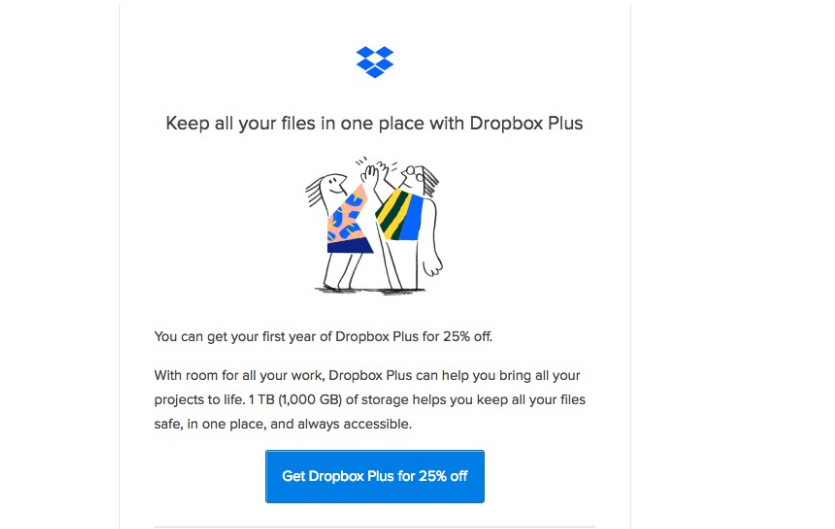
What are the different types of CTA?
Your emails must have a primary goal, but you can have more than one CTAs with different purposes.
Primary CTA
The primary call to action is intended to encourage visitors to take the most desired action. It leads your prospect to conversion.
Secondary CTA
Secondary CTA offers prospects an alternative course of action. It is usually less visible and prominent than the primary one, but it can be useful when engaging with prospects who aren't interested in the original offer.
The idea behind primary and secondary calls to action is that not everyone is interested in the same offer. Although the primary CTA is the ultimate result that the company expects from the visitor's actions, the secondary CTA can help to further direct prospects toward a successful original conversion.
The best practice is to use one or two meaningful and clear CTAs. Whereas, adding too many call-to-actions in your emails might confuse your prospects instead of helping them convert.
Here’s an ideal example of including a primary and secondary CTA in your email:
The idea behind primary and secondary calls to action is that not everyone is interested in the same offer. Although the primary CTA is the ultimate result that the company expects from the visitor's actions, the secondary CTA can help to further direct prospects toward a successful original conversion.
The best practice is to use one or two meaningful and clear CTAs. Whereas, adding too many call-to-actions in your emails might confuse your prospects instead of helping them convert.
Here’s an ideal example of including a primary and secondary CTA in your email:
While “Start Testing” is the primary focus here, “Learn more….” link acts as the secondary CTA and guides prospects who are not yet ready to convert.
Importance of CTA Button in Email Marketing Campaign
The CTA button in the email encourages the sale funnels to act as a transition between different phases of the consumers. CTAs yield better results in taking immediate actions such as buying e-books or subscribing to the email list.
Check out the example:
In fact, a CTA is important for businesses to increase conversion rate as well as meet the expectation of the consumers who want to take the next step in the purchasing process of certain products or services. When you fulfill the needs of the customers, you can drive your business with a high conversion rate.
Check out the example:
How to Create an Effective Email Call-To-Action (CTA)?
Let's look at a few things to keep in mind when creating a CTA for your email marketing campaigns.
1. Define the goal of CTA
Having a clear understanding of what you want to achieve through the CTA enables you to design a perfect button that brings a better conversion rate for your site.
Check out this example where the CTA is used for retargeting the existing customers:
Check out this example where the CTA is used for retargeting the existing customers:
2. Speak directly to your audience
Email is personal. Try talking to your audience directly like you would to a friend or colleague. When a CTA says "Snag Your 10% Off", it uses the second-person pronoun. Why not just say "Get 10% Off"?
A small change in words can make a huge difference. As a reader, you feel that this discount is exclusive to you.
A small change in words can make a huge difference. As a reader, you feel that this discount is exclusive to you.
3. Create a sense of urgency
If you have a limited offer or your email is time-sensitive, make the most of it by including a compelling call to action. People despise missing out, especially when it comes to limited-time e-commerce discounts! Use button text to inform your reader that they must act right now to reap the advantages.
While it's simple to end your button text with the word "now," try experimenting with terms that raise the stakes. "Try it before your friends," for example, or "Offer ends at 6:00 PM." Inspire urgency.
Check out this CTA by Amazon:
While it's simple to end your button text with the word "now," try experimenting with terms that raise the stakes. "Try it before your friends," for example, or "Offer ends at 6:00 PM." Inspire urgency.
Check out this CTA by Amazon:
4. Choose the suitable form of the Call-To-Action button
Call-To-Action can be created in different forms based on the users’ requirements. It is better to create a button rather than a hyperlink in an email marketing campaign to make audiences click on it automatically, or you can also use a QR Code for CTA.
CTAs can be based on HTML or images. However, understand that image-based CTA may not work if the recipient disabled the image. So, you can prefer the HTML based CTA button to notify the recipients.
Check out the example:
CTAs can be based on HTML or images. However, understand that image-based CTA may not work if the recipient disabled the image. So, you can prefer the HTML based CTA button to notify the recipients.
Check out the example:
5. Choose contrasting colors for the CTA button
Contrasting colors attract the viewers' attention and also evoke specific emotions of well-being.
It is advisable to choose the perfect color for designing the CTA button and stand out from the rest of the content in the email. A color wheel is an excellent asset when choosing the best contrasting color for your CTA button. While creating the CTA button, you should not include anything around it. Whatever you do, it should highlight the CTA button and make audiences click it.
It is advisable to choose the perfect color for designing the CTA button and stand out from the rest of the content in the email. A color wheel is an excellent asset when choosing the best contrasting color for your CTA button. While creating the CTA button, you should not include anything around it. Whatever you do, it should highlight the CTA button and make audiences click it.
6. Use action-oriented words
Use action-oriented language or impressive texts with and in your CTAs. Simple or regular text may not bring more conversion rates to your site.
Some of the best CTA texts are ‘Sign Up’, ‘Learn More’, ‘Read More’, ‘Try for free’. For instance, if you are running a textile shop or any product-related store, you can mention ‘Shop Now.’ This greatly adds value and style to the recipients interested in purchasing the product or service.
Check out the example:
Some of the best CTA texts are ‘Sign Up’, ‘Learn More’, ‘Read More’, ‘Try for free’. For instance, if you are running a textile shop or any product-related store, you can mention ‘Shop Now.’ This greatly adds value and style to the recipients interested in purchasing the product or service.
Check out the example:
7. Enhance the CTAs with images
The combination of attractive text with eye-catching themed images is significant to increasing email marketing campaigns' conversion rate. Images enable subscribers to read and take action on content faster than long text information and have a more significant impact on them than extended text information.
Check out the example:
Check out the example:
8. Repeat your CTAs
The repetition of the Call-to-action button is not a bad idea in the email marketing campaign. So, you can create the same button in many places across the page.
However, you should make some differences in the CTA button with text or images and where you are placing it. It is not advisable to overload the CTAs on the email newsletter.
Check out the example:
However, you should make some differences in the CTA button with text or images and where you are placing it. It is not advisable to overload the CTAs on the email newsletter.
Check out the example:
9. Mobile-friendly CTAs
Nowadays, people widely use their mobile devices to check their email. This makes it really important to create mobile-friendly CTAs, so ensure that your newsletters, email templates, and CTAs are designed accordingly.
10. Include Animated GIFs
GIFs are one of the best options to catch immediate attention and enhance email communication among subscribers.
While creating the CTA, you can include animated GIFs that illustrate your product or service. This option may make sense for the audiences to take fast action.
While creating the CTA, you can include animated GIFs that illustrate your product or service. This option may make sense for the audiences to take fast action.
11. Make promotional offers
Generally, people like to receive free products or promotional offers that help to save money.
Make use of the opportunity and plan to offer the subscribers promotional offers. Obviously, more people will click through the button to receive the offer, increasing the conversion rate.
Check out the example:
Make use of the opportunity and plan to offer the subscribers promotional offers. Obviously, more people will click through the button to receive the offer, increasing the conversion rate.
Check out the example:
12. Keep testing your CTAs
The benefit of email marketing campaigns is that you get to test and improve on your content. You'll be able to experiment and be creative by trying out different buttons and text possibilities.
Final Words
CTA plays a paramount role in email marketing, but it is only one part of the story. You also need to focus on creating an engaging email copy and most importantly building a high-quality, valid email list.
Without a valid list of email addresses, you won’t be able to see any result from your email marketing campaigns, no matter how compelling your email CTA and content are.
Clearout.io helps you find valid email addresses and build a high-quality email list.
? Read: How to Check If an Email Address is Valid Without Sending an Email
Without a valid list of email addresses, you won’t be able to see any result from your email marketing campaigns, no matter how compelling your email CTA and content are.
Clearout.io helps you find valid email addresses and build a high-quality email list.
? Read: How to Check If an Email Address is Valid Without Sending an Email
Recent Posts
01 Jul 2025
Best Zoho CRM Integrations for Sales & Marketing in 2025
Discover the top Zoho CRM integrations in 2025 categorized by use case. Explore how each tool's key ...
01 Jul 2025
Sales Automation in 2025: The Guide to Close More Deals Faster
Struggling with manual sales workflows? Follow this guide to explore the sales automation use cases, ...
25 Jun 2025
Top 6 Email Finder APIs in 2025 for All Use Cases
Looking for a reliable Email Finder API? Explore the top 6 email finder APIs of 2025—compare key fea ...
17 Jun 2025
Top 10 Email Spam Checker Tools Tested & Reviewed (2025)
Check out the top 10 email spam checker tools to avoid junk folders. Compare features, ratings & use ...
06 Jun 2025
How To Create a Lead Magnet That Converts in 2025
Looking for more leads? Read how to create a high-converting lead magnet in 2025 with step-by-step g ...
Prospecting ,Email Finder & Email Verification Service
Prospecting ,Email Finder & Email Verification Service
Expand your reach by discovering and verifying the ideal prospects.
Sign up & get 100 free credits | No Credit Card required


